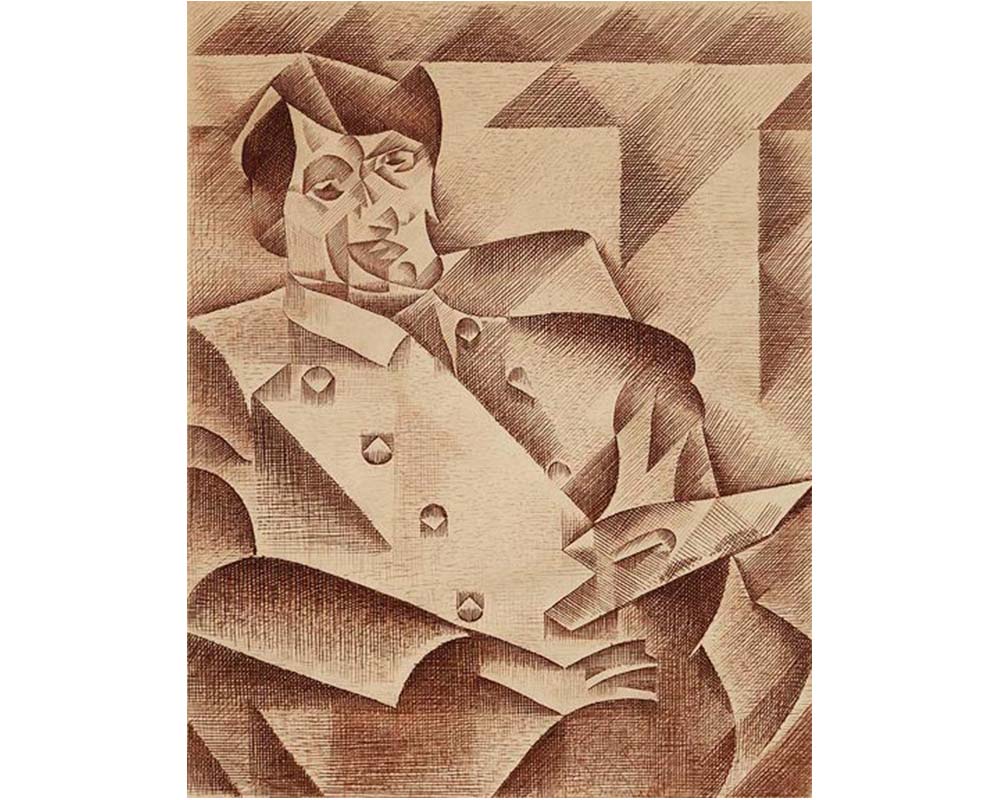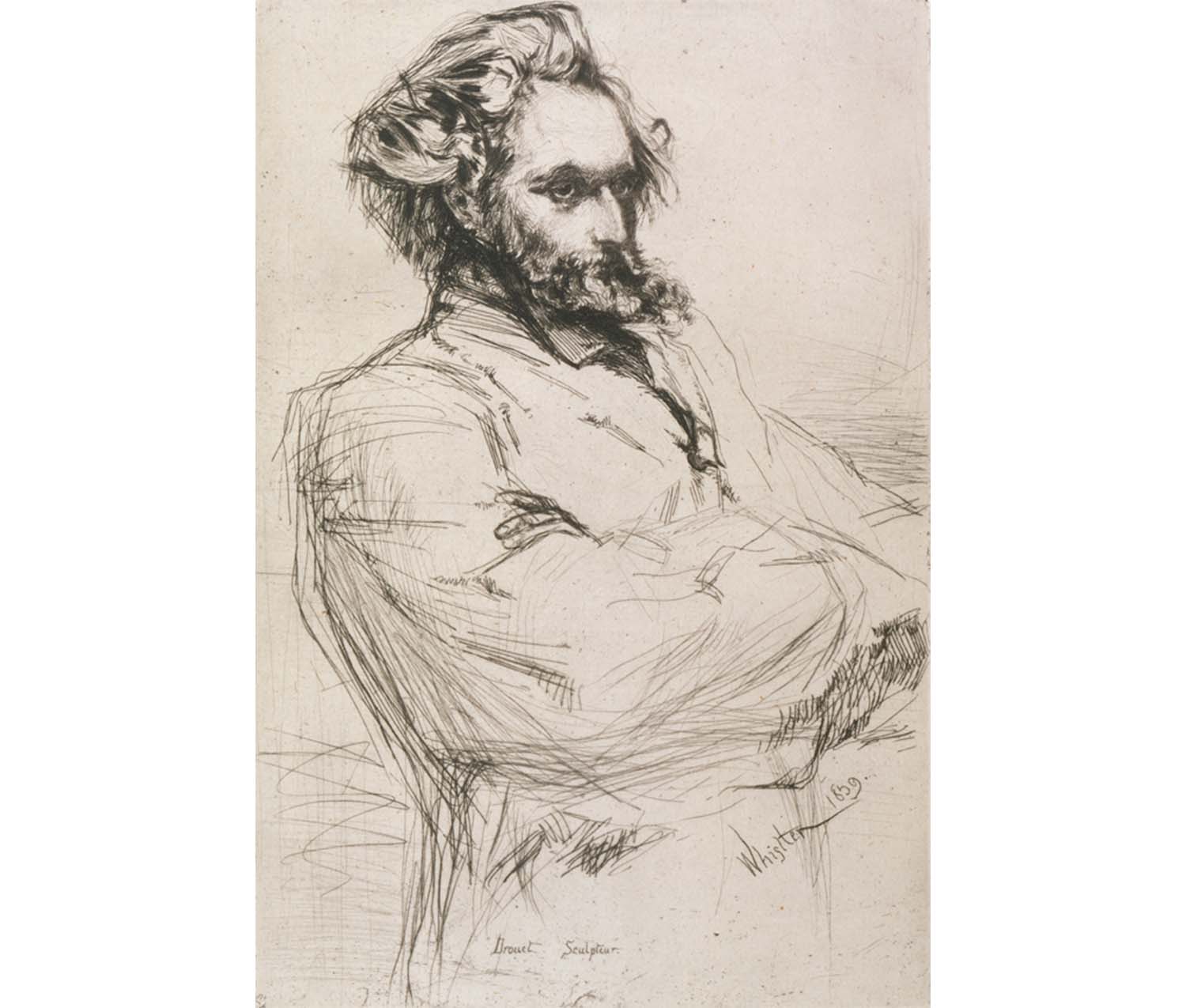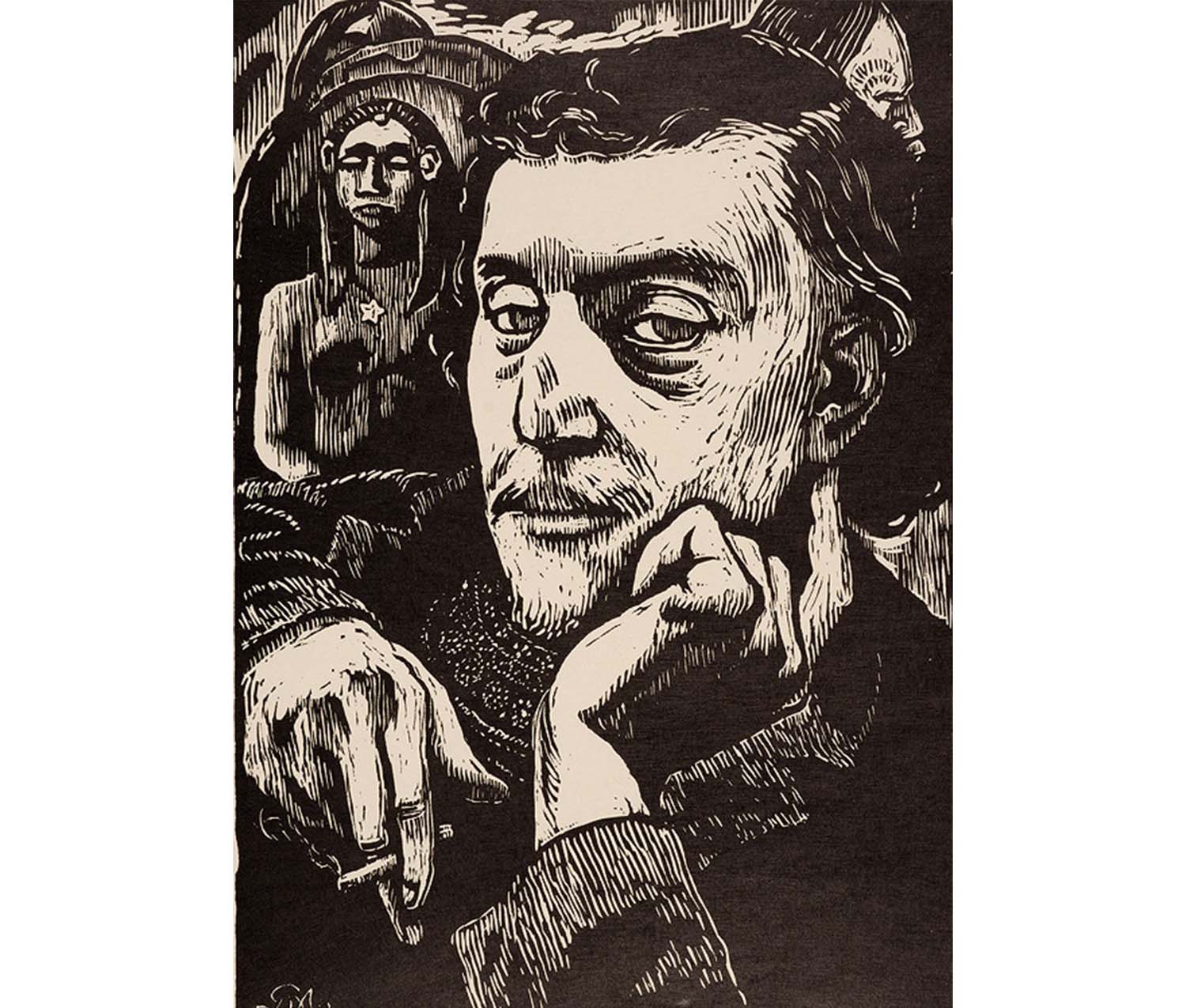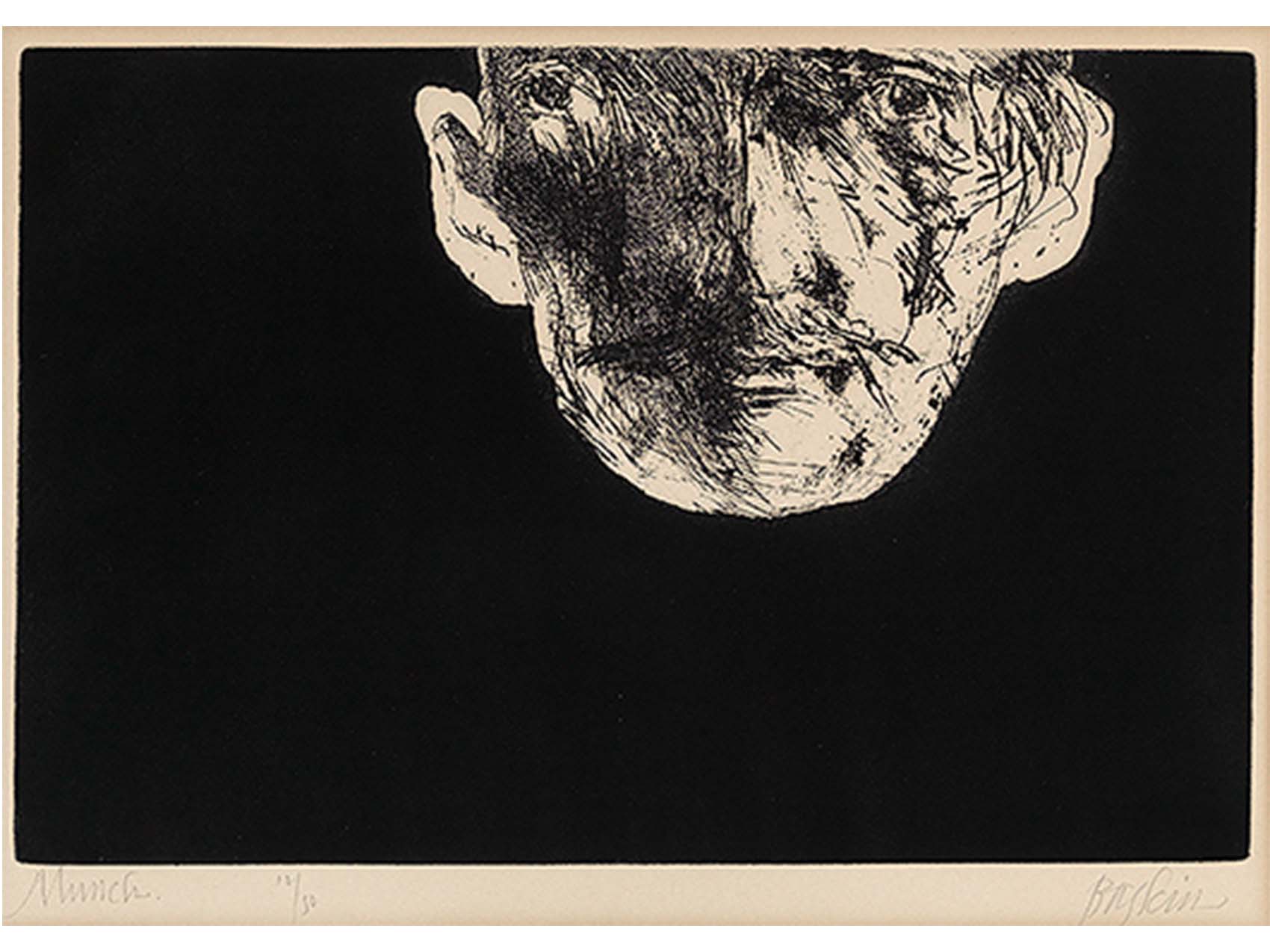
Artists Through Each Other’s Eyes
Guest blogger and curator Renee Klann '19 is a Smith College student, class of 2019. She is the 2015-2017 STRIDE Scholar in the Cunningham Center for Prints, Drawings, and Photographs.
The Smith College Museum of Art is dedicated to bringing out works on paper into the main galleries, where all visitors can see them. Since works on paper are more sensitive to light than other mediums, SCMA has installed special Works on Paper cabinets throughout the galleries for the display of prints, drawings and photographs. Today’s post is part of a series about the current installations of the Works on Paper cabinets, which will remain on view through July 2016.
You may recognize the work of certain artists, but would you recognize the artists themselves? A Works on Paper cabinet on the third floor of the museum is currently displaying examples of the ways artists have captured each other’s appearances through portraits. The works include both famous figures like Pablo Picasso and others, like Charles Drouet, who are not as well-known. Regardless of the subjects’ fame, these portraits allow us to see artists from new and sometimes surprising perspectives.

Jamos Abbott McNeill Whistler. American, 1834–1903. Drouet Sculpteur, 1859. Drypoint printed in black on paper. Bequest of Henry L. Seaver. SC 1976.54.105.
Portraits are not only depictions of a person’s appearance; they can also record relationships between the artists themselves, whether they were friends, mentor and student, or admirers of each other’s work. For example, Georges Daniel de Monfreid became a close friend of Paul Gauguin’s when they were living in Paris. After Gauguin moved to Tahiti, the two stayed in touch by writing letters, sharing their achievements and struggles. De Monfreid depicted Gauguin in a print, capturing his tired expression and the cigarette dangling from his fingers. This image presents Gauguin, an artist who felt misunderstood by the art establishment, from a unique, sympathetic perspective.

Georges Daniel de Monfreid. French, 1856–1929. Paul Gauguin, 1892 after. Wood engraving printed in color on Japan paper. Gift of Selma Erving, class of 1927. SC 1975.24.1.
In contrast to de Monfreid, Leonard Baskin made images of deceased artists to honor their talent and character. The portrait of Edvard Munch suggests his troubled psychological state through his uneven eyes and scratchy shading, as well as the way his face hovers against a deep black background. Although Baskin’s print is unsettling, it’s a compassionate portrayal of an artist with mental illness.

Leonard Baskin. American, 1922–2000. Munch, 1964. Etching and aquatint printed in black on heavyweight cream-colored Rives BFK paper. Gift of Leanna Y. Brown, class of 1956. SC 2012.77.
Although they vary in style and time period, the portraits in the cabinet all reveal intriguing aspects of artists and the interactions between them. Stop by the museum to see them for yourself!